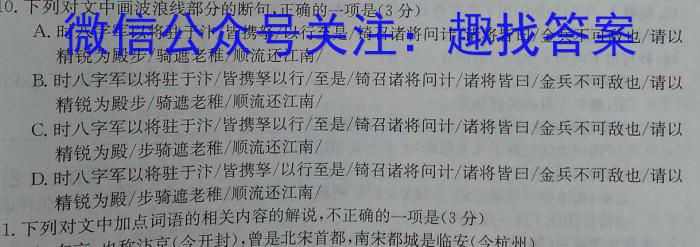蝴蝶有多少只眼睛?
两只复眼,塌闷此每只复眼有很多小的单眼,种类不团迅同而数罩毁目不同。一般在100只以上。
As do all insects, butterflies and moths have a hard outer covering, or exoskeleton, that supports and protects the body. Also typical of insects, lepidopterans possess a body divided into three main parts—head, thorax, and abdomen—and have three pairs of jointed legs.
The *** all, round head protects the lepidopteran’s brain and bears the insect’s sensory organs and mouthparts. Butterflies and moths have a pair of large, oval, compound eyes, each made up of thousands of individual lenses, or ommatidia. In spite of the many lenses, the lepidopteran eye is thought to see a single, reasonably clear image. In addition to the spectrum of colors from red to violet that humans can see, butterflies and moths can perceive ultraviolet wavelengths of light.
Luna Moth
The full-grown luna moth has transparent circles bordered by light yellow and blue rings on its light green wings. Luna moths reproduce twice a year and eat the leaves of trees in the deciduous forests they inhabit. Now endangered because of contaminated food sources and pesticides, the luna moth is found only in North America.
Encarta Encyclopedia
Animals Animals/Breck P. Kent
Two antennae protrude from the head. The antennae are covered with many *** all pits that serve as *** elling organs, enabling the butterfly or moth to locate food sources by scent. Scent also plays a role in lepidopteran mating. The antennae of many male moths, equipped with elaborate side bristles, resemble feathers or ferns and are thought to give the moths a particularly sharp sense of *** ell, enabling them to locate females from several kilometers away. The function of the knobs on the ends of butterfly antennae is not fully understood. But butterflies lacking one antenna tend to fly in circles, which suggests that the knobs may play a role in orientation.
The lepidopteran’s mouth is located between its eyes. When it is not feeding, the butterfly or moth keeps its tongue, or proboscis, curled up below its face. The animal can uncoil the proboscis, which functions like a drinking straw, and insert it into flowers and other food sources. The proboscis may vary in length from a fraction of an inch to a foot or more. A few moths, such as the giant silk moths, have no functional mouthparts, and one family of tiny moths has jawlike structures called mandibles instead of a proboscis. These moths use their mandibles for chewing pollen grains.
Homerus Swallowtail
The large wings and long, tail-like shapes on the hindwings of this Homerus swallowtail butterfly, Papilo homerus, are characteristic of many species in its family, as is its contrasting light/dark coloration. Due to overcollection, the Homerus, unique to Jamaica, is now an endangered species.
Encarta Encyclopedia
Dorling Kindersley
Full Size
The thorax, or middle body part, of a butterfly or moth is the thickest of the body segments. It contains the powerful flight muscles and bears the legs and wings. The six legs are attached to the underside of the thorax. Each lepidopteran foot bears a pair of claws, used for clinging to perches, and hairlike structures responsible (along with the proboscis) for the sense of taste. If the front feet of a butterfly are touched with a *** all brush dipped in a very weak sugar solution, the butterfly will uncoil its proboscis and attempt to feed because the tasting hairs on its feet sense food.
The wings—two forewings and two hind wings—originate from the sides of the thorax. A lepidopteran’s wings are large in proportion to its body and very thin. The wings are made of two membranes with a network of stiff veins between the layers. The scales covering the wings give butterflies and moths their distinctive colors and patterns. Scales may contain pigments like those found in skin or fabric that give them their color. Ridges and furrows on the scales may also diffract light like a pri *** , producing metallic and iridescent hues called structural colors. The scales rub off easily when a lepidopteran’s wings are touched.
The third body part, the abdomen, is tubelike in shape and usually consists of ten segments. Inside the abdomen are the lepidopteran’s heart, respiratory and digestive systems, and reproductive organs. The heart, a muscular tube that runs the length of the abdomen, pumps blood toward the front of the body. Oxygen enters the body through six to seven pairs of breathing holes known as spiracles, located on the sides of the abdomen. The spiracles are connected to a network of tubules called tracheae, which deliver oxygen to the tissues. In females, the reproductive organs take up most of the abdomen. Their abdomens tend to be fuller and blunter than those of the males because of the large number of eggs inside.
The *** allest butterflies are certain blues that have wingspans of a mere 0.7 cm (0.25 in). The largest are the female giant birdwings of Papua New Guinea, which measure up to 30 cm (12 in) across. Moths range in size from tiny Microlepidoptera, several groups of *** all moths with wings no more than 0.16 cm (0.06 in) across, to giant silk moths, such as the atlas moth, which may exceed 30 cm (12 in) in wingspan.
Microsoft ? Encarta ? 2006. ? 1993-2005 Microsoft Corporation. All rights reserved.
蝴蝶为什么有一只眼睛是假的呢有什么作用的
蝴蝶只有一对复眼,你说的所谓假眼其实是位于蝴蝶后翅臀角的眼状斑,这种特征在灰蝶科尤为明显,而且眼状斑的下方一般还有一对尾凸,它们与眼状斑一源慎起酷似蝴蝶的芹手眼睛和触角,可以构成绝妙的伪装,其目雹首敬的就是躲避天敌,很多取食蝴蝶的鸟类会误认为后翅才是头部从而进行攻击,而这样并不会威胁到蝴蝶的生命,因此你会发现很多灰蝶的后翅都有所破损,这就是它们成功骗过天敌的证据。
这里我借用 *** 上的一张图片
这张图片是从一只灰蝶的正后方拍摄的,可以看到它后翅的眼斑和尾凸形状与头部极为近似。
这是一张被鸟类啄食生还的灰蝶图片
蝴蝶的眼睛长在哪里 蝴蝶的眼睛长在哪个位置
1、蝴蝶有一对复眼,是由一万五千多只小眼睛组成的。
2、他们都呈六角形的楔状,上面大,下面尖,每只小眼碧姿知睛的侧面都是互相紧密贴在一起的。
3、蝴蝶有一对明亮放光的复眼,是由一万五千多只小眼睛组成的,它们都悔消呈六角形的楔状,上面大,下面尖,每只小眼睛的侧面都册谨是互相紧密贴在一起的。
….



